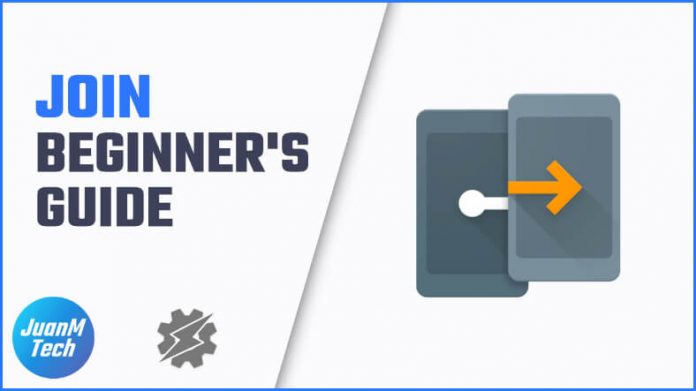Join by joaoapps is an Android application similar to Pushbullet. It allows you to manage all your phone’s notifications directly from your computer. You can send and receive text messages, reply back to apps like WhatsApp and Facebook Messenger. You can also share your clipboard and share files between all your devices. Join it’s also well integrated with Tasker so if you are familiar with Tasker, you can create some useful projects. You can check some of my tutorials here to have an idea of the things that you can do with Join.
Getting started
When you open Join for the first time, you will need to sign in with your Google account. Then enable to push your SMS and calls to other devices.
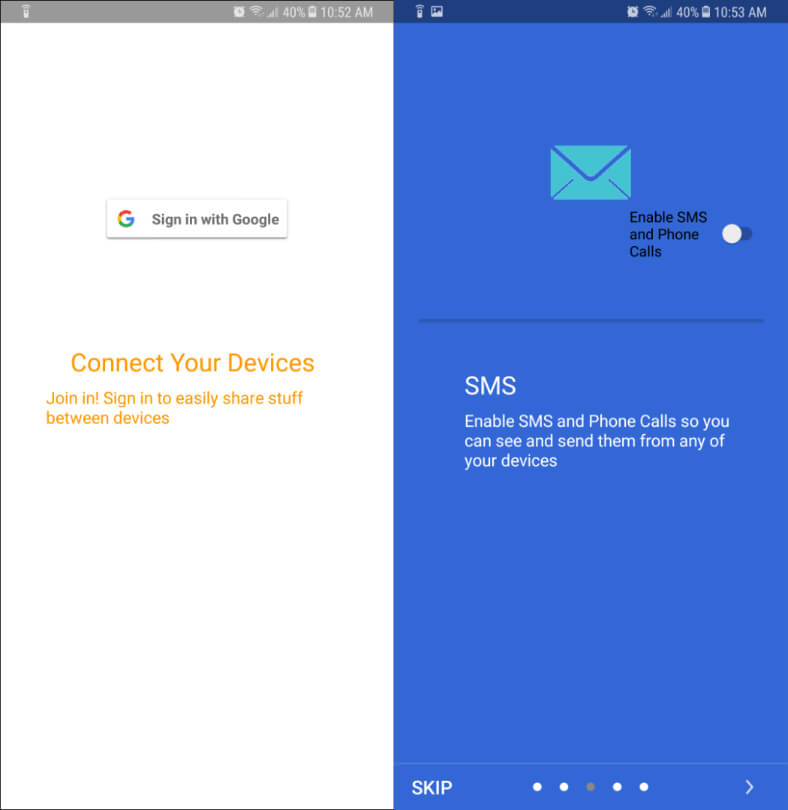
One of the good things about Join is that it uses your own Google Drive to save all your SMS conversations instead of an unknown third party server. You can also enable encryption to make the Data secured. We’ll go over encryption a little bit later.
Next, we have to grant Join Notification Access You will see a message on the Devices page that you can click to go directly to the Notification access setting to enable the service.
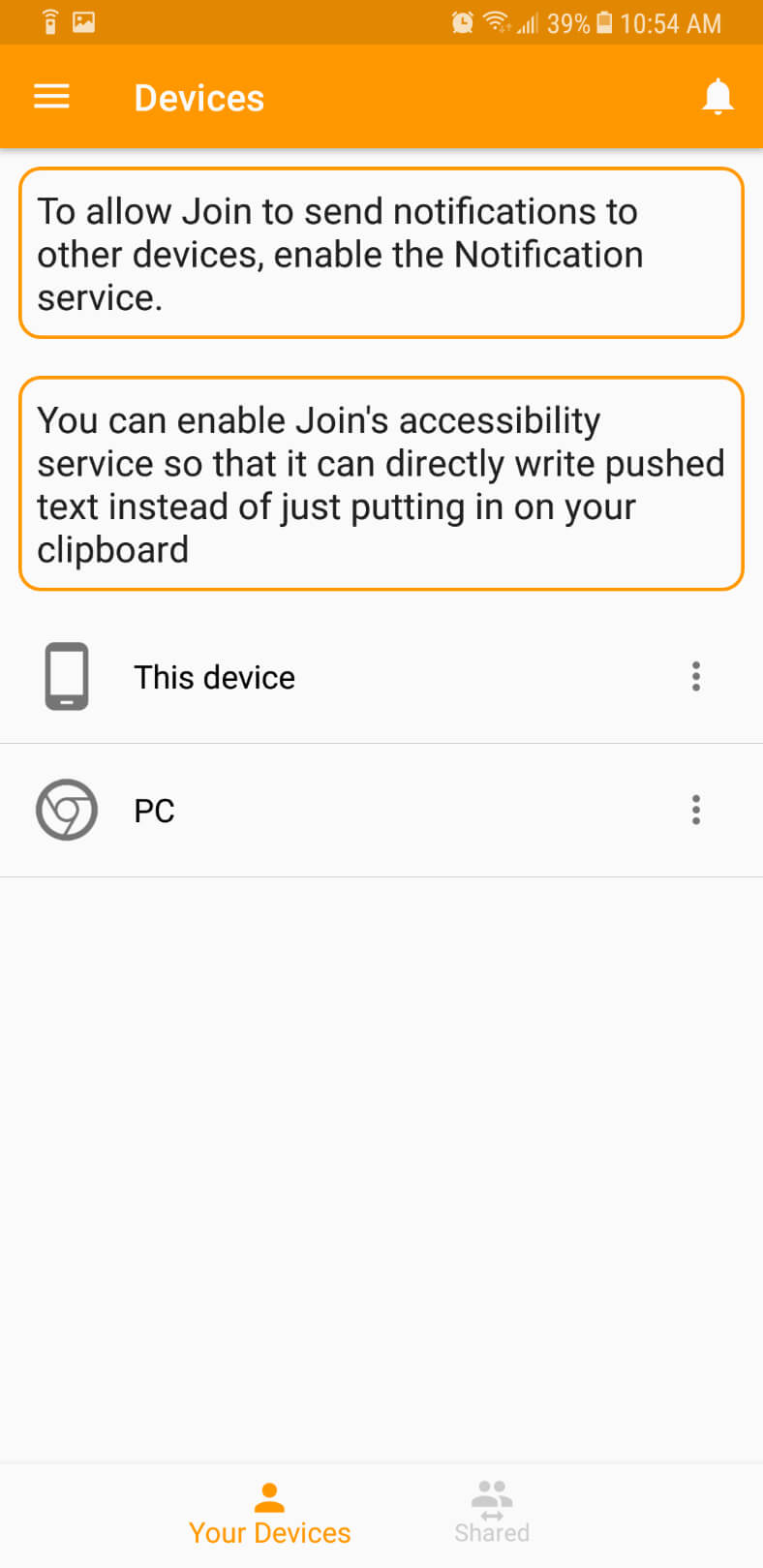
You also have the option to enable Join’s accessibility service. This option is handy for when you push the clipboard from your computer to your device, it would automatically paste the text for you instead of manually having to press and hold to get the Paste option.
Chrome extension
Ok, so we have the initial setup done. Before we continue with the other settings on the phone, let’s go to the computer and set up Join there. On Windows, you can use the free Google Chrome extension or, you can download the paid app from the Windows store. On a Mac, you only have the option to use the Chrome extension. The Windows app lacks some features. One of them is encryption, so for this tutorial, we are going to use the Chrome extension.
After you add the extension to Chrome, you will see the Join icon on the top right side of Chrome. When you click on it, a pop-up window comes up showing the devices currently setup to use Join. You also get a list of all the available options that you can use for each device.
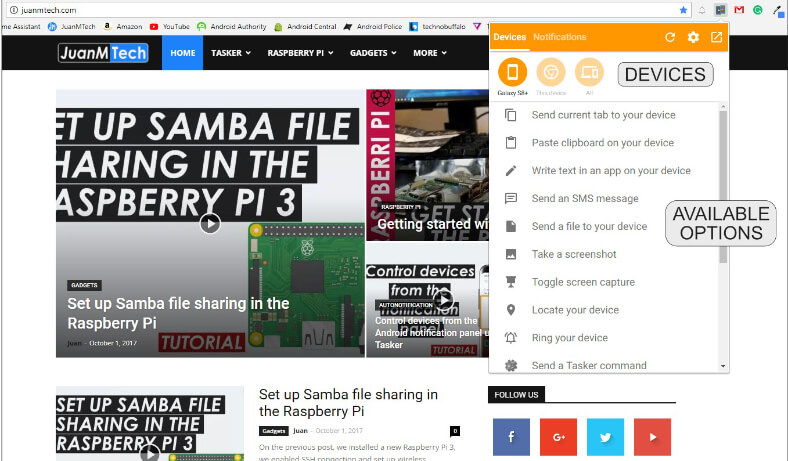
Click on the gear at the type right corner of the Join pop-up to access the settings. There are seven tabs available:
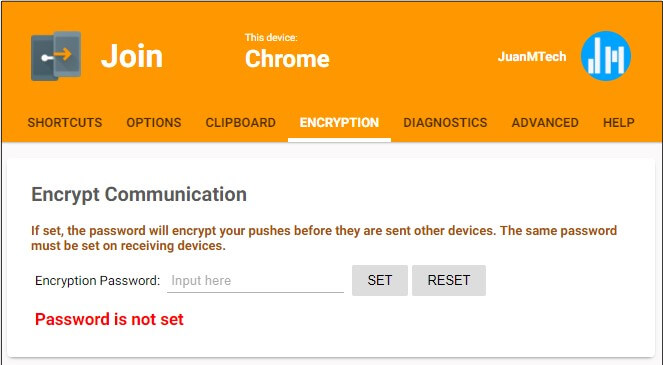
- The Shortcuts tab allows you to create keyboard shortcuts to perform different tasks on your device.
- In Options tab, you can change the way Join looks. You also have the option to hide commands and devices from the Join pop-up.
- On the Clipboard tab, you can manage the clipboard settings.
- Encryption allows to set up a password so all pushes are encrypted.
- The Diagnostics tab can be used to test the Join connection between your devices.
- The Advanced tab has multiple settings. You can manage how links, files, EventGhost and Tasker commands interact when they are pushed.
- Last but not least, we have the Help tab which has multiple links available to other websites and social media communities where you can find help for any type of issues or questions that you might have about Join.
Encryption
To setup encryption, go to the Encryption tab and set up a new password. Then, open Join on your phone and go to Settings > Encryption > Password and enter the same password you set up in the Chrome extension. Now Join will encrypt the data before pushing it to other devices.
Notifications
Next, we need to select what notifications we want to push and to which device or devices. Go to Settings > Notifications > Notification Devices. Then after that, go to Notification Apps and select the apps that you would like to push notifications to the selected devices via Join.
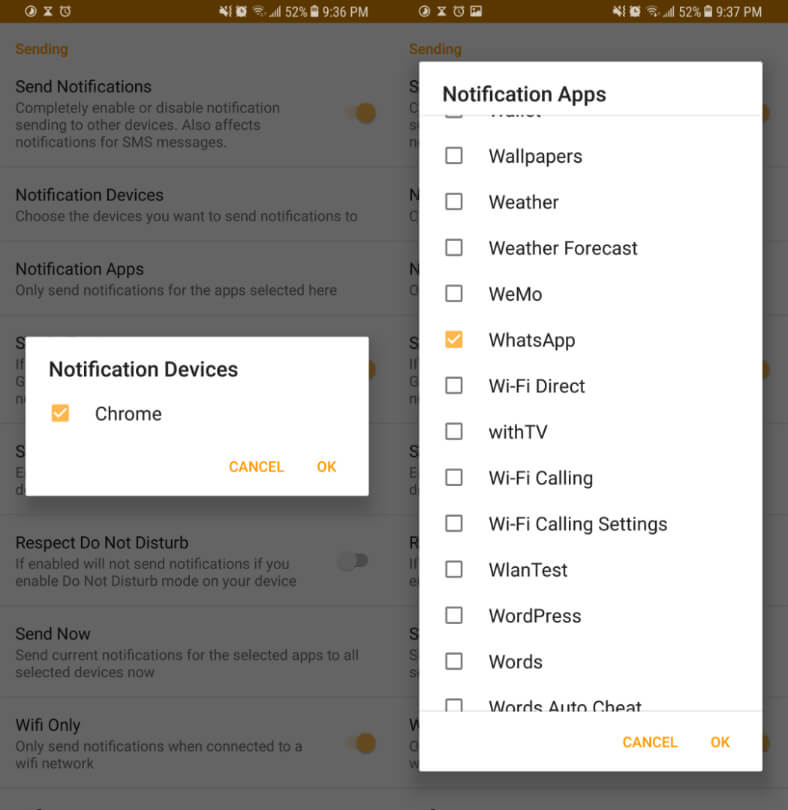
Join on the web
What if you want to access Join from an IOS device, like an iPhone or iPad or from a computer at work? Well, the developer has you covered. Join also has a web interface that allows you to access all your connected devices and send commands to it from most browsers by going to the following URL, https://joinjoaomgcd.appspot.com.
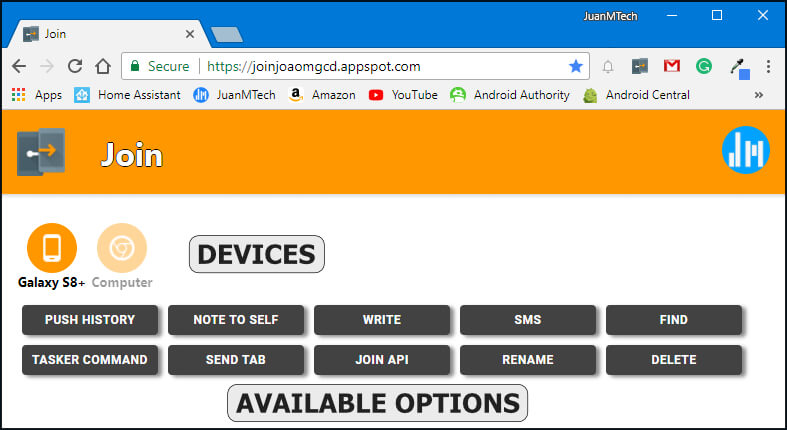
Push websites from an IOS device to other devices using Join
To send links from an IOS device to other devices, we will need to save the Send Tab option in a bookmark on your browser. Open Join web on an IOS device using Google Chrome and select the device that you want to push links. Then, click on Join API, under API Key, click on Show and then close the Join API pop-up window. Now press and hold the Send Tab button and click on Copy Link URL. The link would look like this:
javascript:(function(){ var img = new Image(1,1); img.src = 'https://joinjoaomgcd.appspot.com/_ah/api/messaging/v1/sendPush?url=' + encodeURIComponent(document.URL) + '&deviceId=YOUR_DEVICE_ID&apikey=YOUR_API_KEY' ; })();
If you use Safari on your IOS device. Open Safari, go to any website and add it as a bookmark. Now, we need to edit it and change the name and the URL, so go into your Bookmarks, click on Edit, Select the new bookmark. Change the name to the device name that you will be pushing links to, change the URL to the Send Tab link and then click on done. Now, whenever you want to send the current website on your IOS device to another device, just click on this bookmark and it will push the current link.
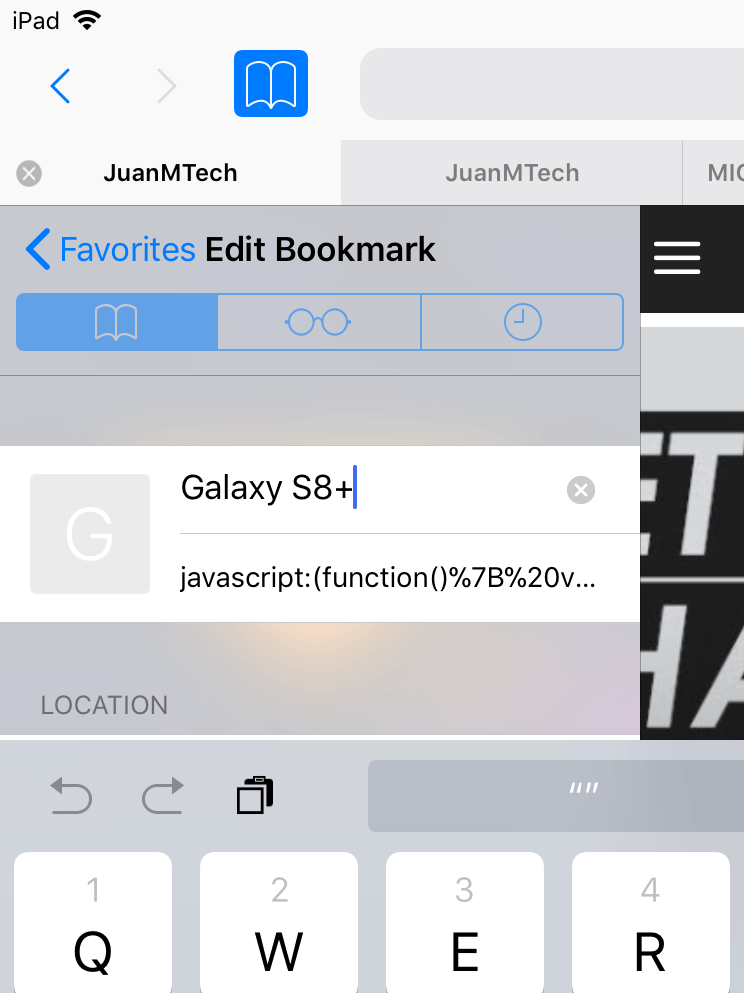
Note: If you have multiple devices that you would like to set up, you will have to repeat this process for each device. Also, at the time of this guide, it is not possible to push any data to an IOS device using Join.
Join API
The Join API is a very useful feature. It allows sending custom commands to Tasker to execute different tasks. You can also use the API with the Webhook service in IFTTT. To access the API, go to the Join web interface. Then, select a device, click on Join API and click on Show to display the API key. The Join API feature has many parameters available that you can add to the API URL.
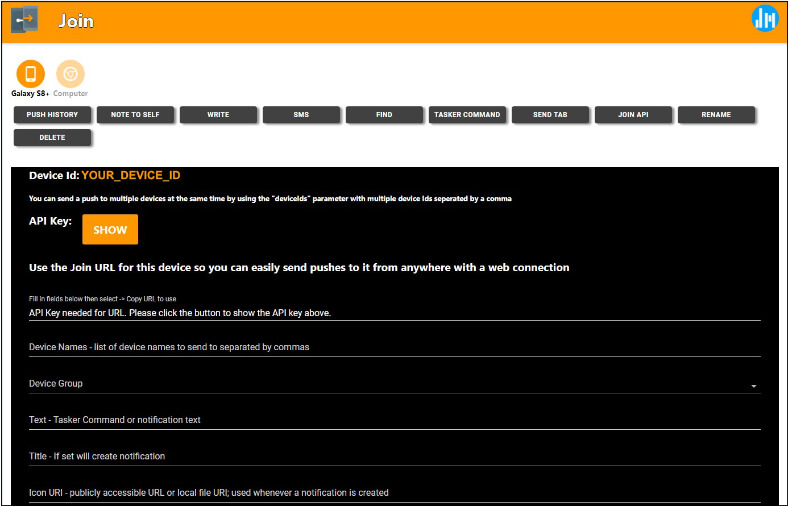
To have an idea of how it works, let’s create an Applet in IFTTT that will allow us to receive a notification from a website on a smartphone every time there is a new article. If you never used IFTTT before and would like to learn how to use it, you can watch a tutorial video here.
To start, let’s go to IFTTT, click on your username and then on New Applet. Now, click on this to create a trigger, search and select RSS Feed and click on New feed item. We are going to set up to get the latest articles from Android Police so enter the following link in the Feed URL field, http://www.androidpolice.com/feed/ Then click on Create Trigger. We now need to create the Action so click on that, search and select Webhooks and click on Make a web request.
Now open another tab and go to the Join web interface, Select a device and then click on Join API. Under the API Key, click on Show so the Key gets displayed and the URL gets populated. Now we are going to be using the Text, Tittle, Icon and URL parameter so on each field just enter 1234 for now. We will replace this after we paste the Join URL in IFTTT.
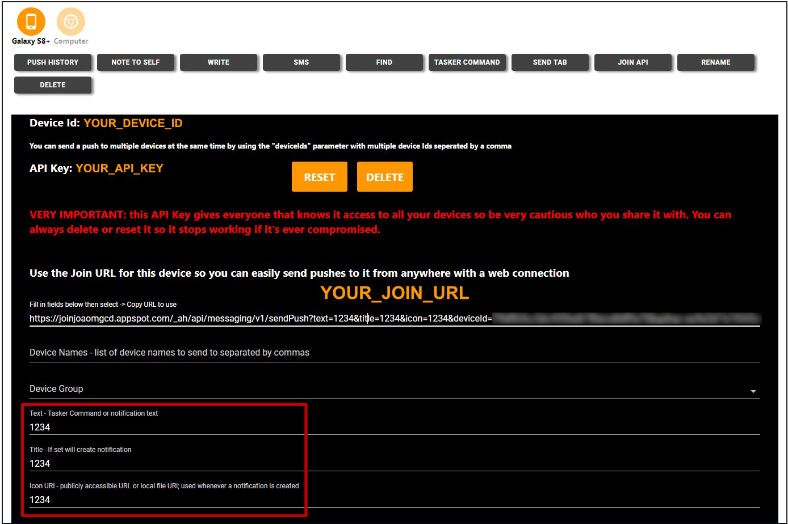
The whole URL will look somewhat this:
https://joinjoaomgcd.appspot.com/_ah/api/messaging/v1/sendPush?text=1234&title=1234&icon=1234&url=1234&deviceId=YOUR_DEVICE_ID_HERE&apikey=YOUR_API_KEY_HERE
Now go back to IFTTT and under the URL field enter the Join URL. For the text parameter, we are going to replace 1234 with <<<>>> Then in the middle add the ingredient EntryTittle. The text parameter will look like this <<<{{EntryTitle}}>>>. Now for the Tittle, replace 1234 with Android+Police now for the Icon, we are going to replace 1234 with the Android Police icon that I found here. We will need to encode the icon URL so copy the URL and go here to encode it. Go back to IFTTT and enter the encoded link for the Icon parameter. For the URL, add the ingredient EntryUrl enclosed with <<<>>>. The URL parameter will look like this <<<{{EntryUrl}}>>>. The whole URL will not look like this:
https://joinjoaomgcd.appspot.com/_ah/api/messaging/v1/sendPush?text=<<<{{EntryTitle}}>>>&title=Android+Police&icon=https%3A%2F%2Flh3.googleusercontent.com%2F-2lq9WcxRgB0%2FAAAAAAAAAAI%2FAAAAAAAAETw%2FYk2jY1eiZss%2Fs640%2Fphoto.jpg&url=<<<{{EntryUrl}}>>>&deviceId=YOUR_DEVICE_ID&apikey=YOUR_API_KEY
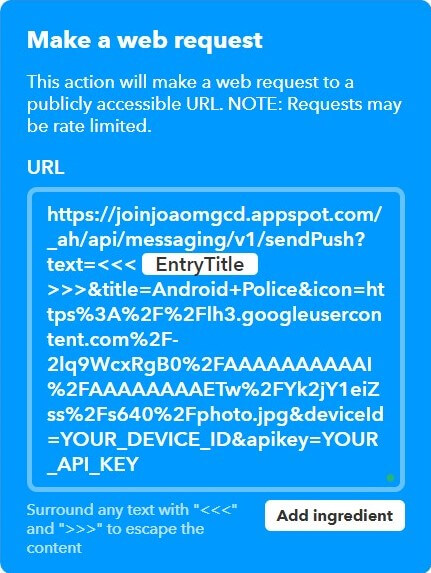
Ok now click on Create action and then Finish. Whenever a new article is available, we will get a notification on the device that will look like this:
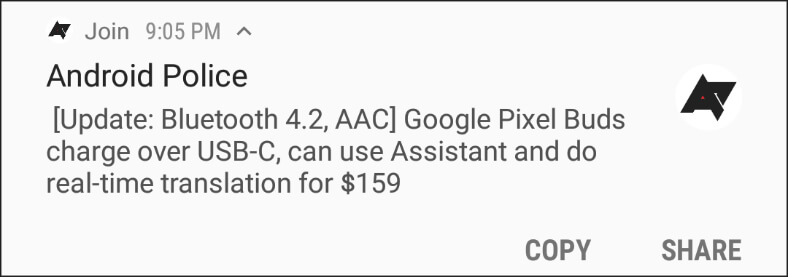
The title of the notification is the name of the website and the text, is the title of the article. Clicking the notification will take you to the article page.
Note: This Android Police notification was originally covered in a tutorial by João Dias, the developer of Join. I wanted to update it a little and include it in this guide so, all credit goes to him.
Join Plugin for Tasker
What if we wanted to trigger a task in Tasker when we get the above Join notification? Simple, we can create an Event Profile in Tasker using the Join Plugin. Go to Tasker, click on the “+” icon, then Event > Plugin > Join. There are four available options: Text, Title, URL and Screen Capture.
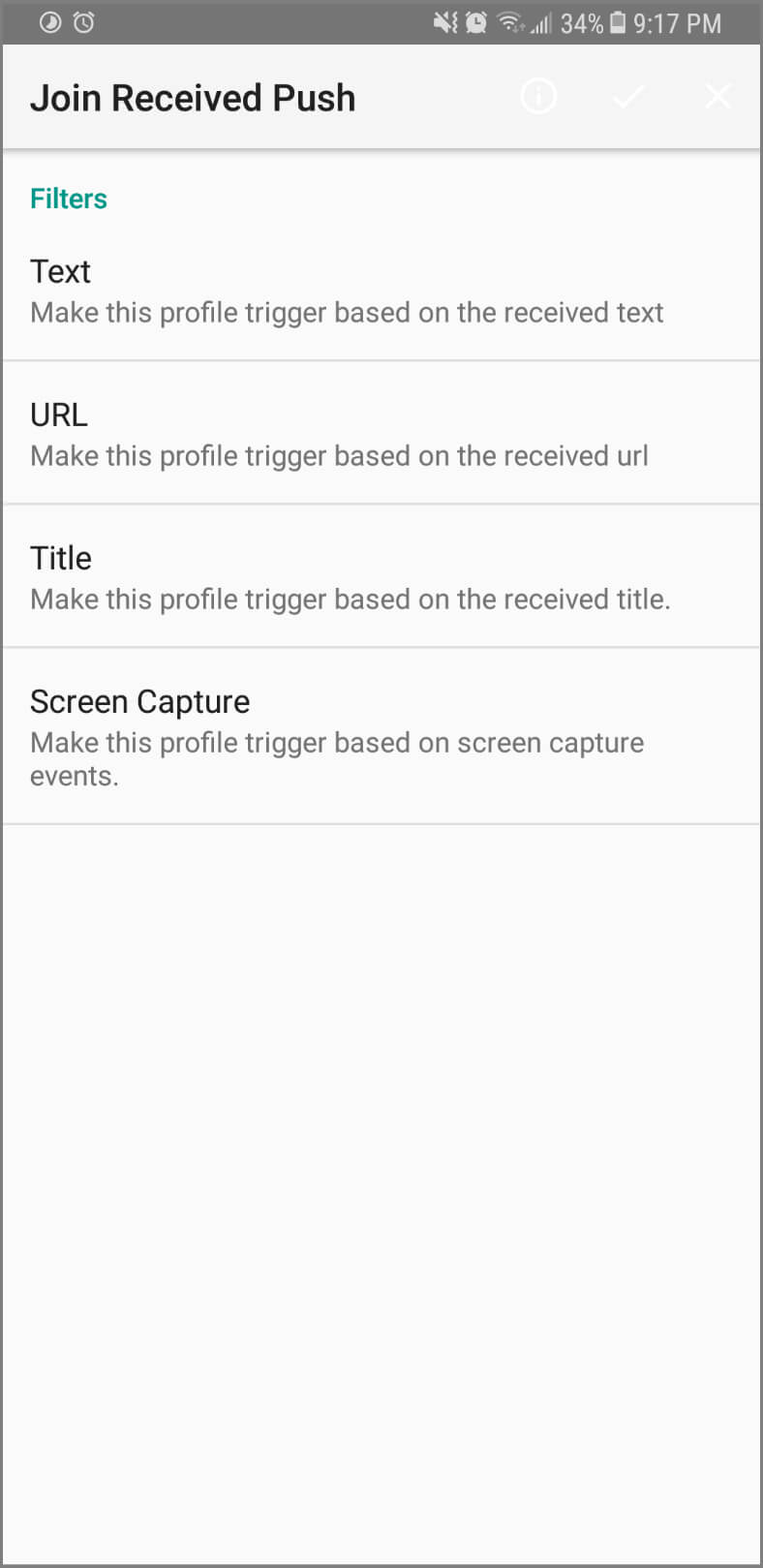
Select Title and then click on Title Filter. Type Android Police in the field and click OK. Then, you have a few available options: Exact, Regex, Case Insensitive and Contains All. Select Exact and back out to connect the new profile to any task you would like to trigger.
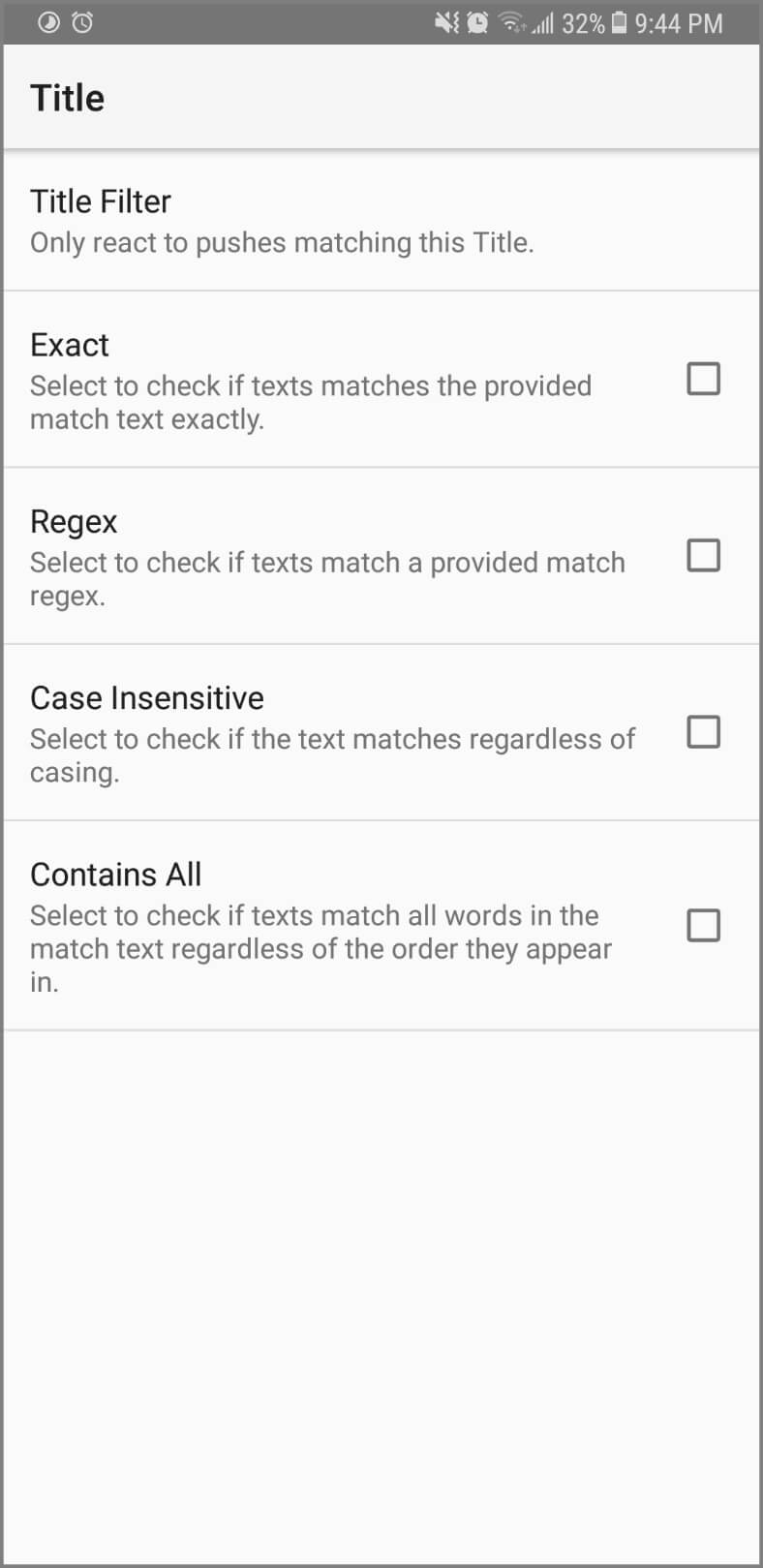
Join and EventGhost
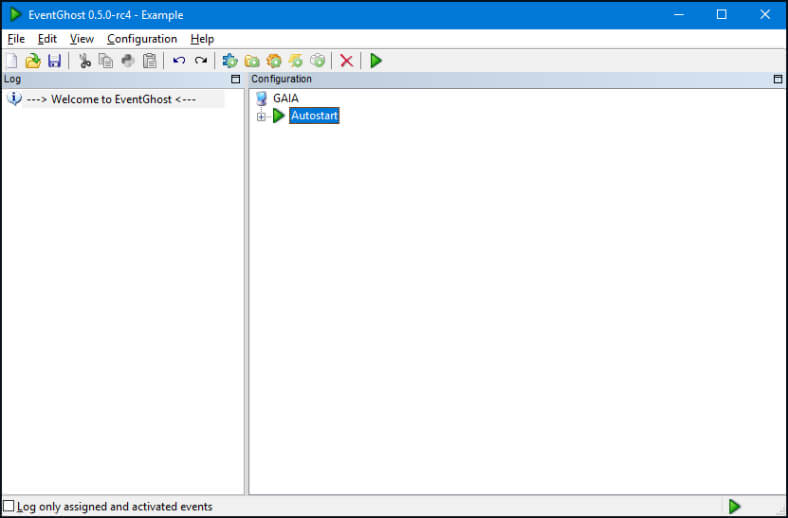
Another great thing about Join is that you can add it to EventGhost and send commands to the computer from other devices to execute different tasks.
You can download EventGhost from here, then go here to download the AutoRemote EventGhost Plugin. As João stated on his website: download the AutoRemote EvenGhost plugin and go to C:\Program Files (x86)\EventGhost\plugins\AutoRemote\ or C:\Program Files\EventGhost\plugins\AutoRemote\, then create a folder named AutoRemote and save the Plugin in there. Now, open EventGhost, Go to Configuration > Add Plugin > Select AutoRemote > Press Ok. Here we are going to set up the following fields:
- Enter the name for the Join device under Device Name
- Paste the Join API URL under Device Personal URL
- Type the Join Device ID under Device Key
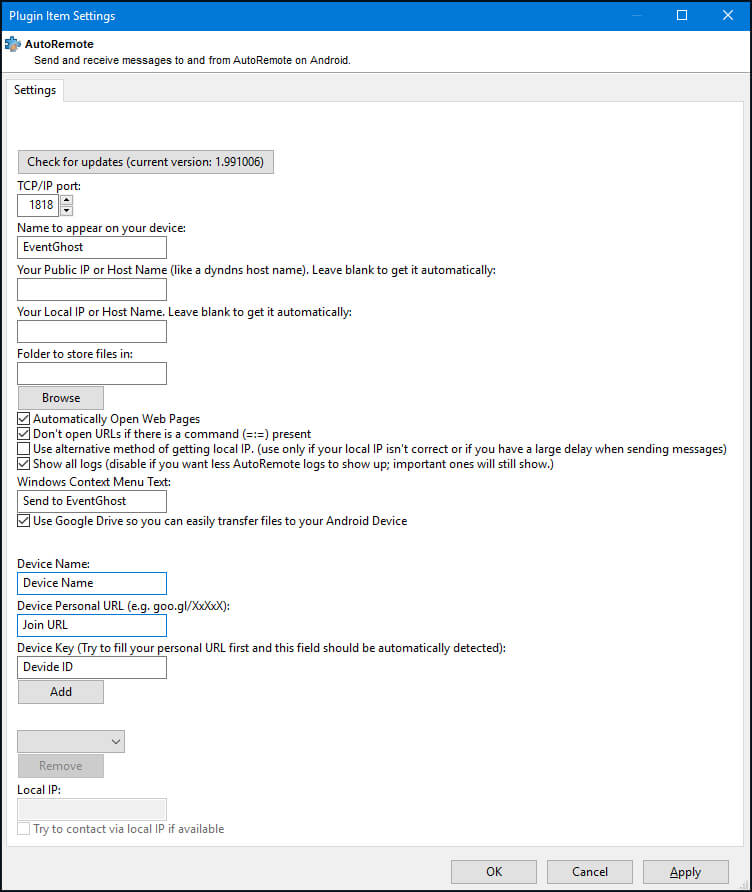
Now click on Add and then OK. We need to save the changes in EventGhost so go to File and click on Save. Last but not least, open the Join Settings on the Chome extension, go to Advance and under EventGhost, enter the port 1818 which is the default port for EventGhost.
OK so we are done and Join is now set up with EventGhost so whenever we send a command from another device to the computer, EventGhost will see it and will be able to execute different tasks on the computer.
To see Join and EventGhost in action, check out this tutorial video where I show how to turn a computer on and off using Google Home and the Google Assistant in a smartphone.
As we can see Join is a powerful app to have. I hope this guide was helpful and you now have a better understanding of how to use Join and its available features. I will try to keep this guide updated whenever there is a new updated done to the app.
Don’t forget to follow me on social media and on YouTube, so you don’t miss any future written guides, tutorial videos and product reviews.


